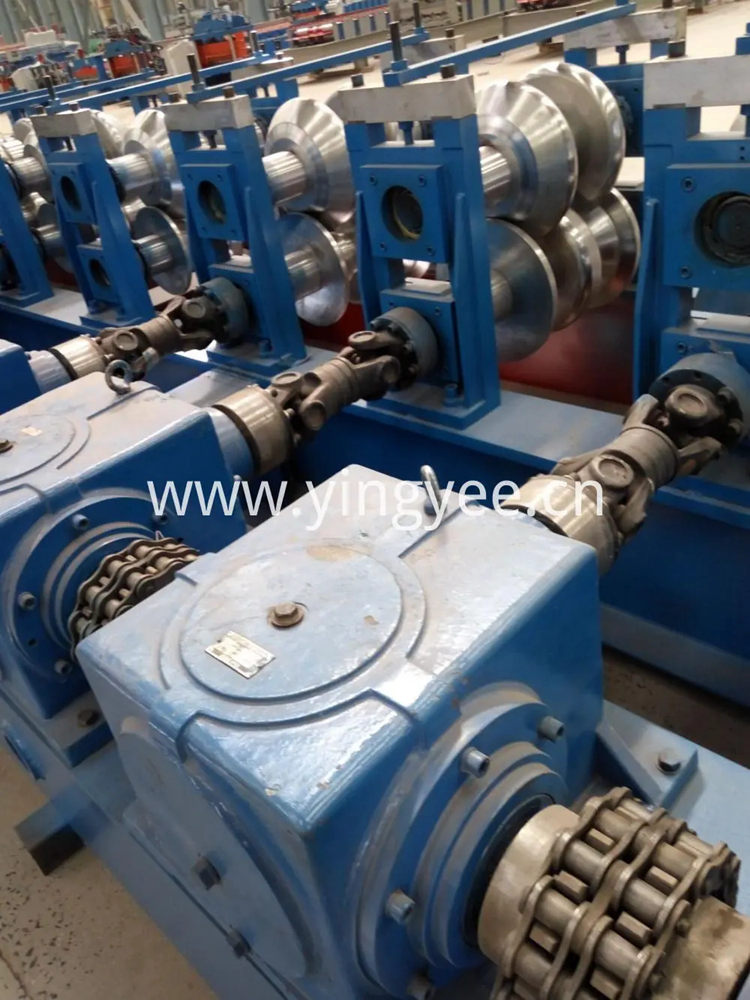
Roll Forming Truck Chassis Innovations and Applications
The automotive industry has undergone significant transformations in recent years, driven by technological advancements and the increasing demand for high-performance vehicles. One such innovation that has gained traction is the roll forming process in the manufacturing of truck chassis. Roll forming provides a highly efficient method of producing components that are essential for the strength, durability, and overall performance of commercial vehicles. In this article, we will explore the benefits, process, and applications of roll forming in truck chassis manufacturing.
Understanding Roll Forming
Roll forming is a continuous bending operation in which a long strip of metal is fed through sequential rollers to achieve a desired cross-sectional shape. This process is particularly advantageous for the production of long and stable components, making it ideal for truck chassis. The method is characterized by its ability to create parts with uniform dimensions, high tensile strength, and reduced material waste.
Advantages of Roll Forming for Truck Chassis
1. Material Efficiency One of the primary advantages of roll forming is its material efficiency. The process minimizes scrap and leftover material, which is economically beneficial for manufacturers. Utilizing high-strength steel or aluminum, roll forming can produce chassis that are not only lighter but also possess high strength-to-weight ratios, crucial for improving fuel economy and payload capacity.
2. Consistency and Precision Roll forming allows for the production of highly consistent and precise components. With stringent tolerances, manufacturers can ensure that every chassis produced meets required specifications. This consistency is vital for maintaining the quality and safety of the trucks, which are subject to rigorous regulation and performance standards.
3. Cost-Effective Production Once the initial setup is completed, roll forming can be a cost-effective manufacturing process for high volume production. The continuous nature of the process reduces labor costs and time spent per unit, enabling manufacturers to respond swiftly to market demands without compromising on quality.
4. Versatility Roll forming can accommodate various materials, designs, and sizes, making it adaptable to different chassis configurations. Whether it’s for light-duty, medium-duty, or heavy-duty trucks, the versatility of roll forming makes it suitable for diverse applications in the trucking industry.

The Roll Forming Process
The roll forming process begins with the selection of raw materials, usually cold-rolled steel or aluminum. The material is then fed into a series of rollers that gradually shape it into the desired profile. The rollers can be adjusted to create different shapes, ensuring customization for specific chassis designs. The formed metal can be further processed through welding, punching, or cutting to create the finished product.
Once the roll forming is complete, manufacturers often conduct quality control inspections to ensure that the chassis meets the necessary safety and performance standards. Advanced technologies, such as Computer Numerical Control (CNC), are often integrated into the process to enhance precision and automate production, further increasing efficiency.
Applications in the Trucking Industry
The roll forming process is utilized in various applications within the trucking industry. Truck chassis produced through roll forming are vital for supporting the load-carrying capabilities of vehicles, contributing to overall stability and safety. Additionally, custom roll-formed components can be designed for specific vehicle configurations, including flatbeds, refrigerated trucks, and specialized delivery vehicles.
As the push for sustainability continues, the lightweight nature of roll-formed chassis is gaining attention for its role in reducing carbon emissions through improved fuel efficiency. Moreover, as the trucking industry embraces electric vehicles, the roll forming method is adaptable for producing lightweight frames that can support the innovative designs of future vehicles.
Conclusion
Roll forming has revolutionized the way truck chassis are manufactured, providing numerous advantages over traditional methods. With its cost-effectiveness, efficiency, and versatility, roll forming stands out as a significant contributor to the modern automotive industry. As technological advancements continue to evolve, the role of roll forming in producing robust and reliable truck chassis will undoubtedly expand, paving the way for the next generation of vehicles.